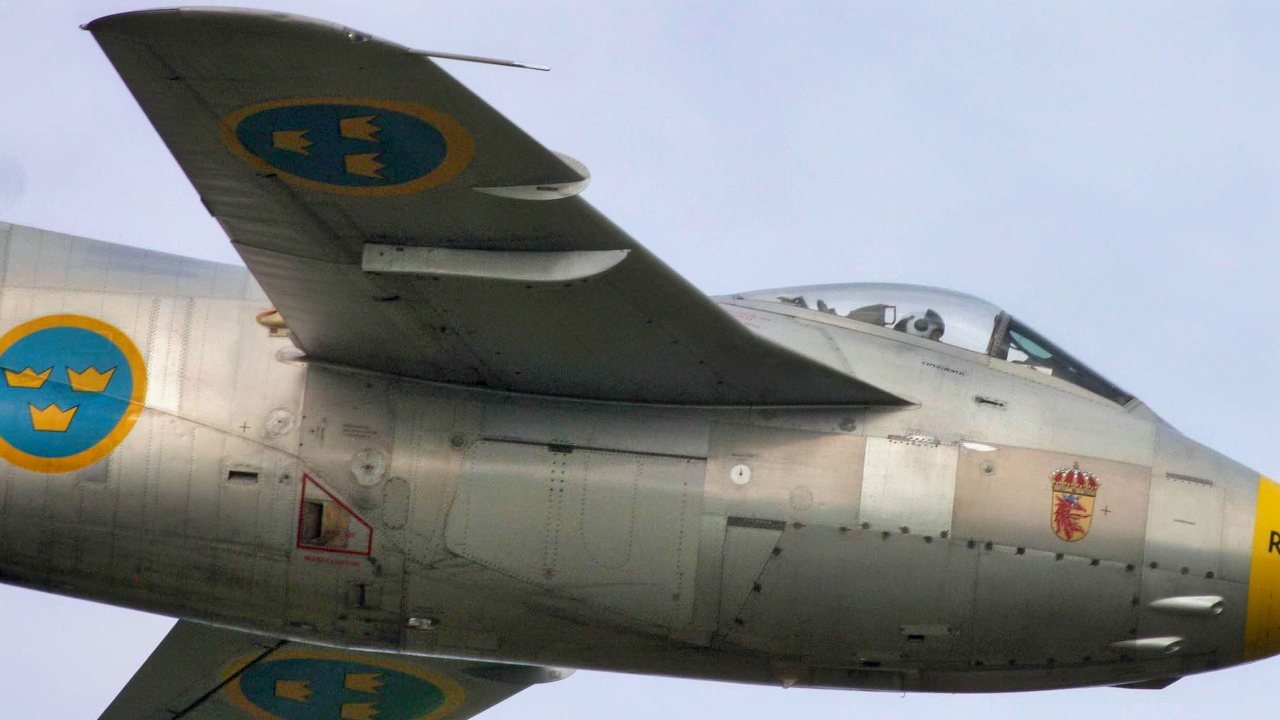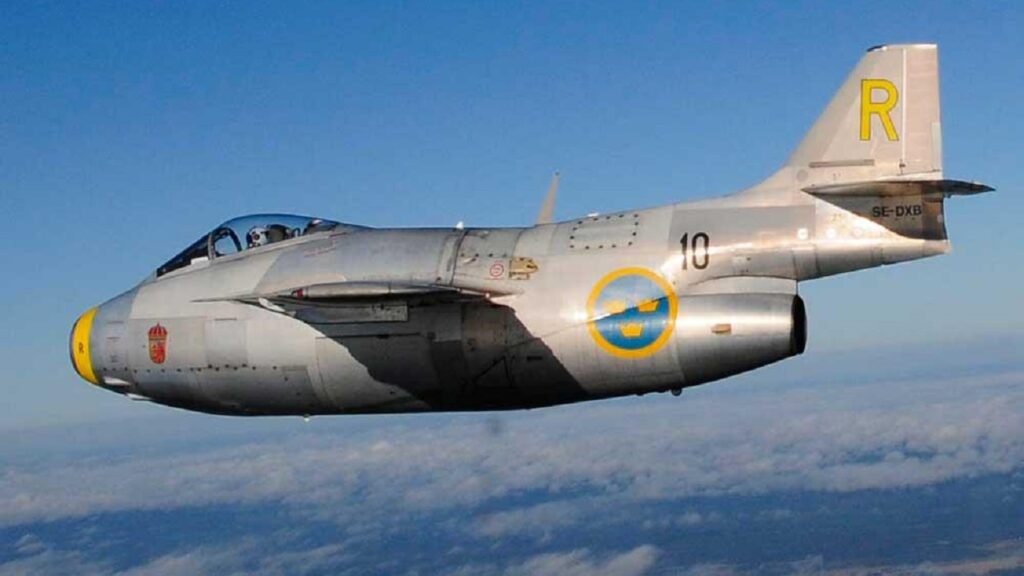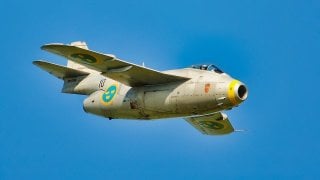Saab 29 Flying Barrel Fighter Had Just 1 Mission Only
Entering service in 1951 and active until the early 1970s, the Saab 29 served both as a fighter and a bomber, participating in peacekeeping missions in the Belgian Congo. Although only three remain today, the Saab 29's legacy underscores the innovation and effectiveness of Swedish military engineering.
Summary: Saab, a renowned Swedish company, has produced several formidable military assets, including the "Flying Barrel," or Saab 29. The fighter was built for action during the Cold War, most likely against the now-defunct Soviet Union.

-Introduced in 1947, this swept-wing jet fighter, influenced by earlier Nazi designs, became a favorite for its maneuverability, ease of control, and speed.
-Entering service in 1951 and active until the early 1970s, the Saab 29 served both as a fighter and a bomber, participating in peacekeeping missions in the Belgian Congo. Although only three remain today, the Saab 29's legacy underscores the innovation and effectiveness of Swedish military engineering.
The Saab 29 'Flying Barrel': A Testament to Swedish Military Ingenuity
“We bought a Saab!” George Carlin said mockingly as his rapt audience laughed. “What’d you buy a Swedish piece of s**t like that for?” Carlin angrily demanded, reenacting for his laughing audience a conversation he had. “It’s a safe car!” Carlin huffed, mimicking the people he had been speaking with for his audience to further laugh at.
But Swedish engineering, at least when it comes to the military domain, is no laughing matter. After all, this is the nation that produced the Gotland-class submarine that was so effective it sank a US nuclear-powered aircraft carrier during a wargame exercise. And it isn’t only safe cars and lethal submarines that the Swedish company, Saab, regularly produces.

A Truly Great Plane
They also produced an incredible jet fighter aircraft in 1947.
It was dubbed the “Flying Barrel” by its supporters, because of its barrel-like qualities when observed by the naked eye. The Saab 29 swept-wing jet fighter—also known as the J29—was everyone in the Western world’s beloved jet fighter at the start of the Cold War. The Saab 29 was the second jet-powered fighter craft to be developed in Europe by Sweden since the Saab 21R was first being experimented on.
Interestingly, Sweden used old Nazi designs for a swept-wing aircraft to influence and inspire their ultimate Saab 29 warbird. The Saab 29 was a favorite of pilots, what with its easy flight controls, maneuverability, and speed, it was a welcomed platform.
The Saab 29 officially entered service in 1951 and remained on active duty until the early 1970s. The warbird was designed to serve as both a fighter as well as a fighter-bomber bird.
In terms of weapons, the Saab 29 was at first equipped with the Svenska Flygomotor RM2 centrifugal turbojet, allowing the birds to reach nearly 630 miles per hour in terms of speed. The “Flying Barrel” had an initial climb rate of 7,500 feet-per-minute. In the late 1960s, Saab upgraded the engines for the last time, giving it what was then a newer Svenska Flygmotor RM2B with an afterburner.
The Saab 29 saw action in the Belgian Congo, when this bird was part of a larger peacekeeping force to bring order and stability to the region.
Lessons Learned
Only three Saab 29s remain today.
The Saab 29 was a marvelous warplane that, in many respects, was ahead of its time. This warbird carried with it so many lessons learned over the course of decades in service that the Swedish were able to apply these lessons learned and condition future Swedish fighters to incorporate those critical lesson learned.

Saab 29 was not something that should have evoked consternation and mockery from others. It was a serious warplane with a wonderful track record in the midst of the Cold War.
About the Author
Brandon J. Weichert, a National Interest national security analyst, is a former Congressional staffer and geopolitical analyst who is a contributor at The Washington Times, the Asia Times, and The-Pipeline. He is the author of Winning Space: How America Remains a Superpower, Biohacked: China’s Race to Control Life, and The Shadow War: Iran’s Quest for Supremacy. His next book, A Disaster of Our Own Making: How the West Lost Ukraine, is due October 22 from Encounter Books. Weichert can be followed via Twitter @WeTheBrandon.
All images are Creative Commons.


